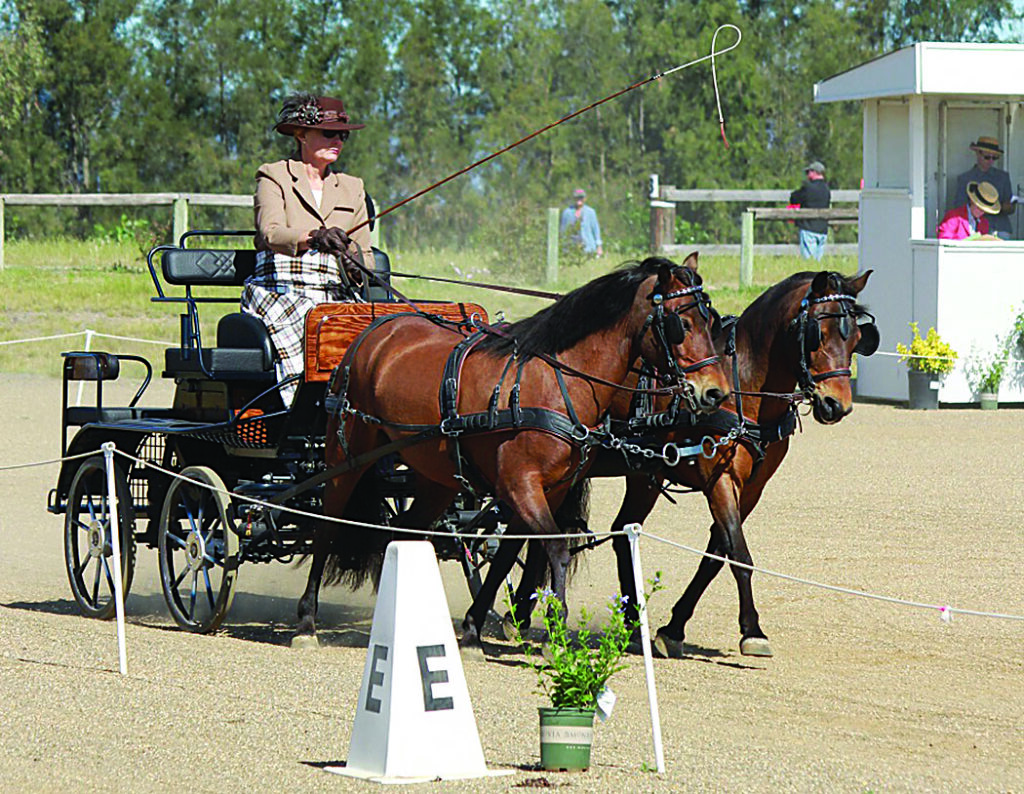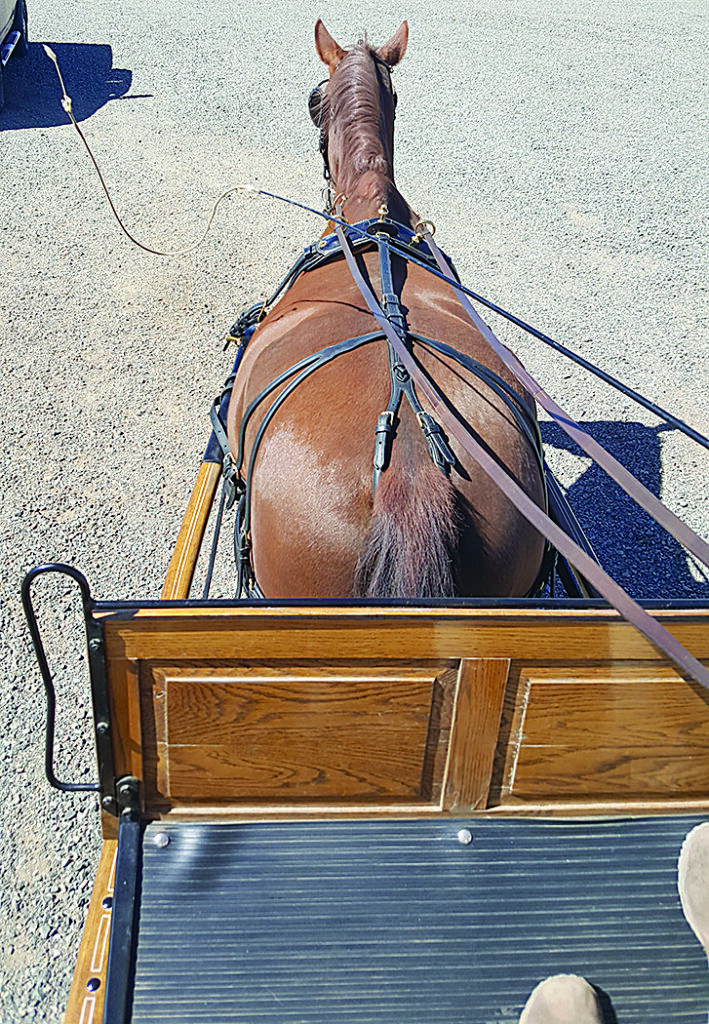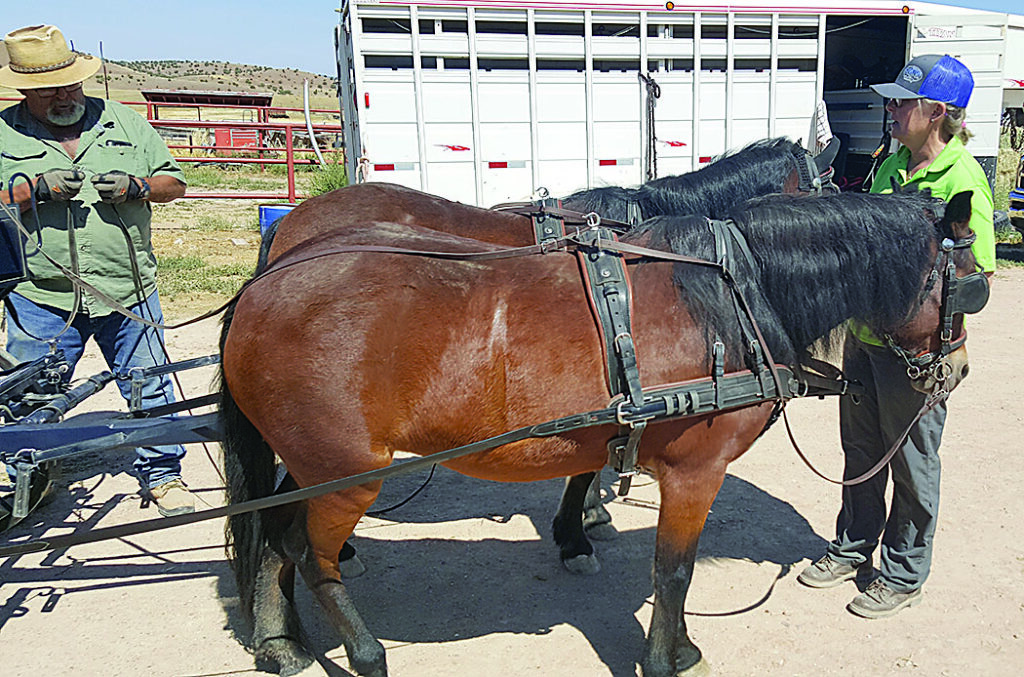By Rita Thompson-Tinsley

From Cinderella’s enchanting pumpkin coach to the unforgettable wedding of Lady Di and Prince Charles, we are a world enamored with the stateliness of a horse and carriage.
Seated behind the driving horse Cosmo, a large hackney horse who knows his job well, driver Patricia Demers reminds me, “We are basically riding history when we are driving a horse”. This statement proves profoundly true with the study of the advent of driving which began primatively in circa 2000 BC, and dynamically increased throughout Europe with the uptrend of the domestic horse.
Patricia operates Carpe Diem Farm and specializes in training beginner drivers, among other lessons offered. Cosmo was her pack horse leader while Patricia worked as a wrangler in the Sierras. With a hardy build and extraordinary temperament, hackneys are capable of trotting 50 miles a day, which made Cosmo ideal for driving a carriage.
Demers was hired as a professional wagon driver at Knott’s Berry Farm where the real adventure began. The circus came into town, and she was hired as a groom to ride along with the driver. Twice a day they did circus parades with horses adorned with plume head dresses.

As a groom, Patricia had to be attentive to every detail. During one parade, the Near Side horse (on left) reached over to the Off Side horse (on right), grabbed his plume and pulled his bridle off. Patricia called for the driver to stop as she jumped down 8-10 feet to resolve the tack trauma. Another time, as they approached the end of their route, a toddler from the crowd broke away chasing a ball and landed flat on his face in front of Patricia’s wagon. A step away from disaster, the horse came to an abrupt halt, without que, and waited for the toddler to be removed. This is the absolute ideal temperament you want in a driving horse. Soon after, Devers became an official wagon driver at Knott’s Berry Farm.
Gary Gang, local trainer and vice president of Chino Valley Equestrian Association, knows a lot about the dynamics of driving and refers to it as one of the most dangerous equestrian sports. He is well noted as a Combined Driving champion and enjoys training others. Helmets are worn and safety vests are mandatory for advanced classes.
Though Gary works with Andalusians, Dartmoor ponies, Gypsy Vanners, Morgans and Trakehners, to name a few breeds, he stresses that finding a good driving horse is “….not so much a breed issue. It totally depends on the horse and the individual”, says Gary. Regarding qualities, he emphasizes the value of a good mind set. “They’re not reasoning animals, they’re reactive animals”, he points out. A willing attitude is ideal. The driving horse has to adapt to wearing blinders (blinkers), and pulling a 500 pound wagon with you in tow.
Surprises are not welcome. Gary relays a story about training a client’s thoroughbred. During the last lap before concluding the practice, the horse’s tongue made its way over the bit, a situation that prooved exceptionally traumatic. “The mare literally lost her mind, exploding in a tumultuous bucking exhibition.” Gary was catapulted from the wagon, kicked, and injured trying to subdue the animal, and the client’s wagon was damaged.
It’s absolutely crucial to relay information about horse’s ‘pet peeves’ to your trainer. There are enough terrible things that can happen even when you know everything. If this kind of wreck can happen to an experienced trainer, can you imagine what episodes are possible in your own backyard? It’s so important to have professional help when it comes to horse driving.
Leslie Kennard comes a long way to train with Gary even though she has championed many driving events over the years. She currently drives a pair of Dartmoor ponies, Lou Lou and Duke. Why pairs? “They tend to be team players”, Leslie explains. “They have each other and they help each other. They offer more pulling power and stability than just one pony”.
Like many of the popular driving horses, the Dartmoor pony comes from England. This hardy breed is centuries old and known for having excellent feet, temperaments, and stamina.
So, what to do with your driving horse?

Commercial horse and carriage business, better known as “Wait for the bride”. (Your horse must be trained to stand, a lot.)
Competition. Combined Driving is the most popular equestrian driving sport designed after the horse rider’s 3-Day Eventing.
In Combined Driving competitions you’ll see horses pulling appropriately designed light carriages and carts. They perform arena dressage, a cross-country marathon section, and then a cones obstacle course. All three of these portions exhibit the driving horse’s precision and control, along with fitness and endurance, a thorough showcasing of the driving horse as the quentessential athlete.
If you and your four-hooved-drive buddy have been looking for a new adventure, Gary Gang recommends Arizona Driving and Carriage Society.
Meanwhile, in the ‘Cosmo drawn carriage’, I was discovering that very same ‘rush’ being whisked away by Cosmo.
Drive safely.

